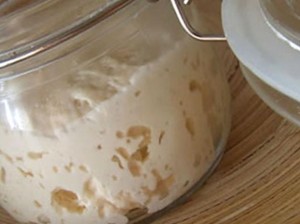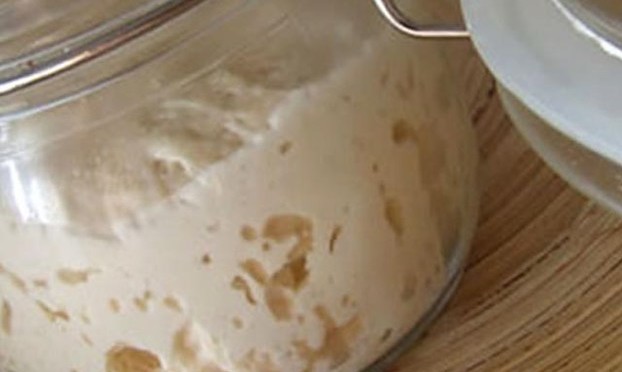When I was a boy, I often listened to my grandparents telling me their life experiences. Among all those stories, some I was impressed in the mind, one of these on
all said that their time when a girl married, carried with it the “dowry” composed of things at once precious, sheets, ascigamani, valuables and yeast. This sourdough was handed down from generation to generation, was nothing more than a piece of bread dough that was given as a symbolic wish for the new generation. At that time there were no cubes of yeast that we find today in all
supermarkets.

The new family was kneading the dough piece “mother” with new flour and water, and the new bread leavened, and so they produced the new bread. With each new batter came off a piece of dough that would serve the next time. And so on for months, age, decades, from family to family and from generation to generation.
I've always been fascinated by the rise and this story, who knows that this has not affected my decision to make the pizza. To think that in that piece of pasta, fruit of doughs, reshuffles and still reshuffles, There are fragments of everyday life of the years, of past centuries, is incredible. Among all the grains of flour quell'impasto, if it still conceals someone's grandmother or great-grandmother.
For all those people who got married recently and have not brought with them the “dowry”, I suggest these few tips to create a home a new strain of yeast.
The result: the fragranza, the scent, the complexity and articulation aromatic, the pleasure of self-production of the same yeast.
How do you get?
It can be done as in the families of the past: tear off a piece from someone who uses it, so you are assured that he is alive, active and operating immediately.
But the departure from flour and water, it is undeniable, is most satisfying and enables you to tune into direct contact with the yeast.
It will become your yeast, equal to that of any other, because the son of a different environment for each. The exact opposite of standardization of yeast.
Try starting it simple:
kneading in a cup of water and 50g spotless 100 flour
mixture is creamy, cover with a damp dish, so that it is protected, but not sealed, leave in a draft-free and a little 'warm, ideal for me is a corner
a kitchen cabinet. Make every day what happens: within two or three days should show signs of fermentation (bubbles and lifting, sour smell). If it does not, becomes more likely the appearance of mold and should try again, perhaps choosing a meal you will find it less raffinata.Quando fermented, will mean that we have enjoyed some microorganisms, our yeast, that will need nurturing.
And you be providing him: kneads the embryo of yeast with more water and fresh flour, to obtain a mixture of similar consistency to the first and away again in the shelf.
This is called "refreshment".
Follow the above steps two or three times, always check that the smell is sour without exaggeration, the formation of bubbles and the dough is puffed up a bit '.
Now that the yeast (o lievito madre) reacts more quickly and that you just need a day or less to ferment the refreshment you can try to make us a first mixture of bread.
Until you're sure of its effectiveness, it will be better not to use it for pizza.
